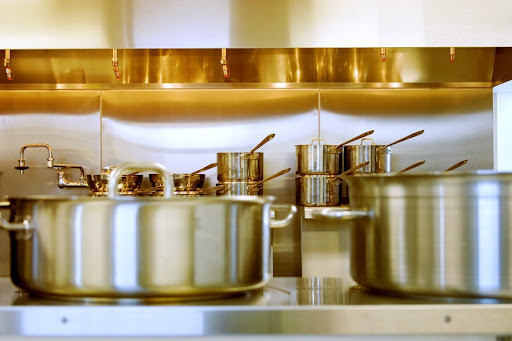There are a lot of options on the market when it comes to pots, pans, and cookware in general. The wide variety in the cookware market serves a purpose, but it can be slightly complex to navigate. Especially for the novice cooker. However, one of the throughlines that a cookwareshopper, no matter how new to the field, may notice is that the majority of brands offer some sort of stainless steel line of cookware. Stainless steel has been a popular choice in kitchens for a variety of reasons, and isn’t limited to cookware. Stainless steel appliances and countertops are also wildly popular.
When it comes to stainless steel cookware, and steel pans in general, there is some basic, but good information to have that will help the average consumer decide if a set of stainless steel cookware is right for them.
Very Versatile
One of the first things to know about stainless steel is that it offers the chef a wide range of versatility in functionality. Stainless steel is safe to use on the stove-top, in the oven, and even in a broiler. This makes it a great option for the home-chef who wants to be able to make a wide spectrum of dishes all in the same set of pots and pans. Not only that, but stainless steel is generally very well received when used in searing, sautéing, braising, or in the creation of sauces.
Stainless steel isn’t only versatile in the techniques and various cooking methods that it can be utilized with, but the range of sizes and types of pots and pans is also wide enough that it covers most home-chef needs.
While stainless steel cookware sets do offer a good versatility and range in cooking functionality, there is one material that boasts a broader range of cooking environments. Cast-iron skillets are one of the most versatile materials common in cooking. They can be used on a stove, in the oven, or even with direct fire. This makes them a great selection for camp-cooking. Not to mention, the flavors that can be pulled from a cast-iron skillet are top-tier.
However, where cast-iron wins in versatility, it also wins in care-difficulty-level. Cast-iron skillets need to be treated or “seasoned” before every use. This is a process of repeatedly heating and cooling oil on the surface of the cast-iron in order to create a slick-non-stick cooking surface. As such, stainless steel offers a cooking vessel that’s much easier to care for.
Easy to Care For
One of stainless steel’s best selling points is that it is easy to care for. Some brands and manufacturers of stainless steel cookware would even claim that their products are dishwasher safe. However, this is a point of contention in the stainless steel care community. While some experts and manufacturers stand by their word that their product’s lifespan is unaffected by dishwasher use, others claim that the harsh temperatures and chemicals in detergents wear down the durability and lifespan of stainless steel cookware.
That being said, hand washing with soap and water is a great alternative for it, and is often very easy and effective. By gently hand-washing stainless steel with hot soapy water, users can expect to extend the lifespan of their cookware nearly indefinitely. Add in an occasional polish, and your will continue sparkling like it’s brand new for as long as it’s in your kitchen.
Most Stainless Steel Cookware is Lined
When choosing a set, or even a single pot or pan, it’s important to understand the manufacturing process behind stainless steel cookware. Stainless steel by itself is a pretty terrible conductor. This means that it heats unevenly, inconsistently, and does a poor job of retaining heat, too. These are all key ingredients (pun intended) to cooking a dish and having it come out the way it was intended. This is why nearly every piece of stainless steel cookware is lined.
Rather than relying on the poor conduction and heat distribution of the stainless steel finish, stainless steel cookware is made with a core metal that is responsible for heat conduction, retention, and distribution. The two most popular metals for this core are aluminum and copper.
Aluminum is a consumer-friendly choice when it comes to the budget, while copper offers a higher level of conductivity. This pushes the cost of copper-core stainless steel cookware up, but offers certain cooking benefits like a faster reaction to heating levels. Understanding which type of metal is at the core of your stainless steel cookware will help in guiding how to cook.
Final Words on Stainless Steel
There are a lot of choices to make when it comes to buying a set of cookware in the modern day marketplace. Understanding the differences between cookware materials, manufacturing processes, and the appropriate techniques associated with each can help the at-home chef make an informed decision that’s perfect for their own personal cooking style.










